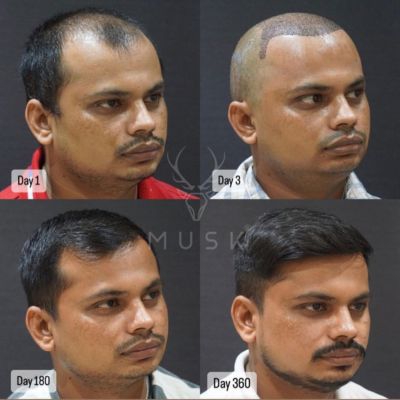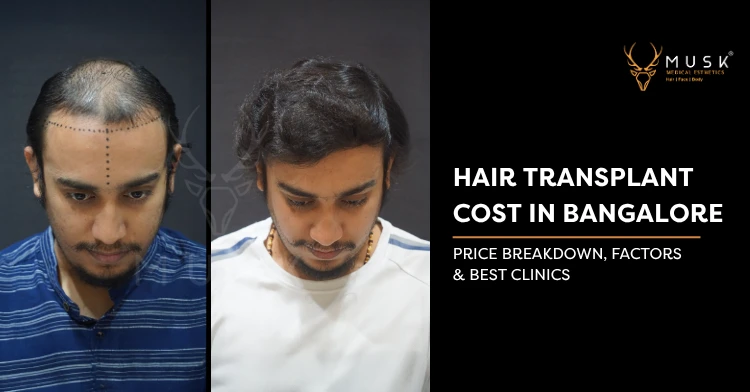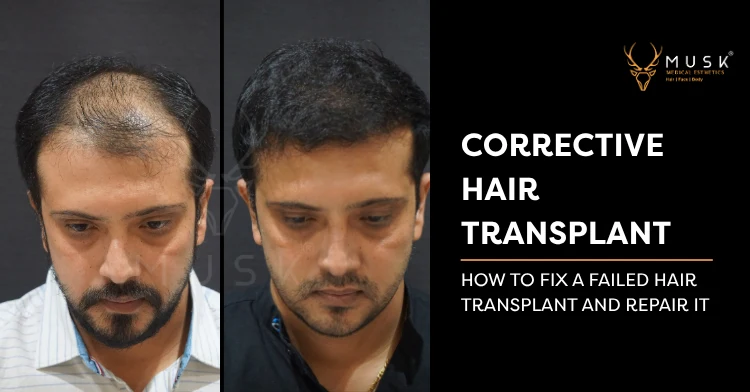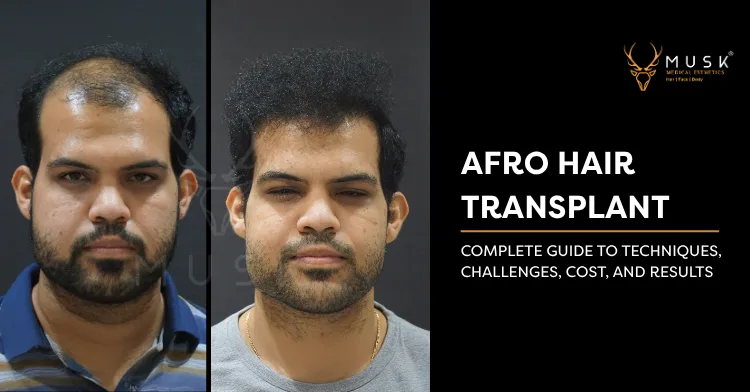Hair Transplant Timeline: Journey, Results and Recovery Timeline
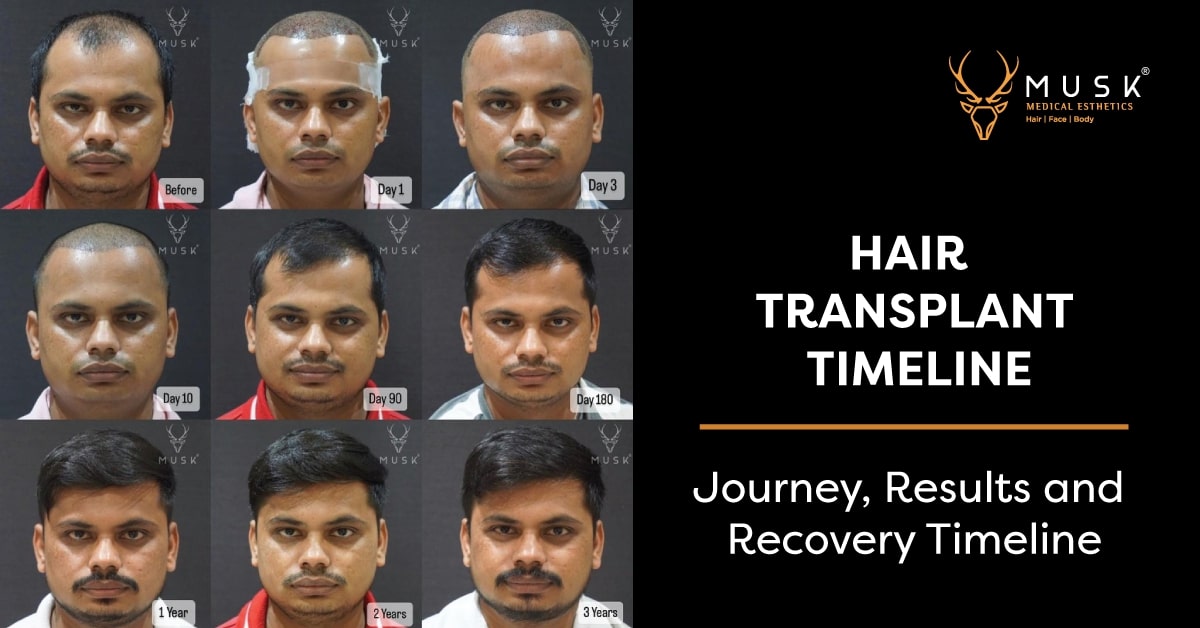
Hair transplantation is a surgical procedure that offers a permanent solution to hair loss. While the prospect of a full head of hair can be exciting, understanding the hair transplant timeline is crucial.
This guide will walk you through the entire process, from the initial consultation to the final hair surgery results, providing insights into what to expect at each stage of your hair restoration journey.
From the moment you consider hair transplantation, numerous questions likely arise. How long will the procedure take? What is the recovery process like? When can I expect to see results?
This comprehensive timeline aims to address these queries and provide a clear roadmap for your hair transplant experience. By understanding the different phases involved, you can make informed decisions and manage your expectations effectively.
Stages of Hair Growth
- Anagen (Growth Phase): This is the longest phase, lasting approximately three to five years, though some hairs can grow for up to seven years. During anagen, hairs are actively pushed out by the hair follicles and continue to grow until they reach the end of their lifespan. Scalp hairs typically have a longer anagen phase compared to facial or pubic hairs.
- Catagen (Transition Phase): Following the anagen phase, the catagen phase is a transitional period lasting about ten days. During this phase, hair growth slows, and the hair follicles shrink. The hair separates from the follicle but remains in place on the scalp for its final days of growth. At any given time, about 3-5% of hairs are in the catagen phase.
- Telogen (Resting Phase): This resting phase follows catagen and lasts approximately three months. During telogen, the hair has stopped growing but remains in place while new hairs form in the follicles. About 10-15% of hairs are in the telogen phase at any given time.
- Exogen (Shedding Phase): The exogen phase, which can last from two to five months, is considered an extension of the telogen phase. During this phase, hairs that are separated from the follicle and not actively growing will fall out. Hair shedding can occur while sleeping, washing, or brushing. As old hairs fall out, new hairs start growing in the follicles.
The Pre- Hair Transplant Journey
Preparing for a hair transplant involves several key steps to ensure the best outcome. First, you’ll start with an initial consultation where the surgeon assesses your scalp, discusses your hair restoration goals, and explains the available techniques, such as Follicular Unit Transplantation (FUT) and Follicular Unit Extraction (FUE). This is also where you’ll get information on costs and payment options.
Choosing the right clinic and surgeon is crucial. Research their credentials, read patient reviews, and examine before-and-after photos of previous work. During consultations, ask about their experience with different techniques, expected recovery times, and any risks involved.
Before the procedure, you’ll need to undergo medical evaluations, including blood tests, and possibly get health clearance from your primary care physician. It’s also important to make lifestyle adjustments, such as stopping blood thinners, quitting smoking, and limiting alcohol consumption.
Understanding the procedure itself is vital. FUT involves removing a strip of scalp and dissecting it into grafts, while FUE involves extracting individual follicles. This hair surgery typically lasts between 4 to 8 hours. Post-surgery, you’ll need to follow care instructions carefully and attend follow-up appointments to monitor your progress.
Hair Transplant Recovery Timeline
-
Hair Transplant After 1 Day
On the first day after a hair transplant, your focus will be on following care instructions closely. You might experience some swelling and tenderness, which can be managed with pain relievers as advised by your surgeon. It’s essential to keep your head elevated and avoid strenuous activities.
Touching or scratching the transplanted area should be avoided to prevent dislodging the grafts. You’ll likely need to wait before washing your hair or using hair products, following your surgeon’s specific guidelines.
-
Hair Transplant After 1 Week
At this stage, you’re likely still experiencing some post-surgical effects. The transplanted areas may be red and swollen, and you might notice some scabbing around the grafts. These symptoms are normal and part of the healing process.
Most people experience mild discomfort, but it should be manageable with prescribed pain medication. You’ll need to follow specific aftercare instructions, such as gentle shampooing and avoiding physical activities that could stress the scalp. It’s crucial to avoid touching or scratching the transplanted area to ensure that the grafts remain undisturbed.
-
Hair Transplant After 10 Days
By the 10-day mark, the initial swelling and redness should be significantly reduced. Scabs around the grafts may still be present but are starting to fall off. You might notice some early signs of hair shedding, which is a normal part of the hair transplant process. It’s essential to continue following your aftercare routine closely.
Most patients can resume light activities, but it’s still important to avoid strenuous exercise or activities that may impact the healing process.
-
Hair Transplant After 15 Days
By 15 days post-transplant, you’ll start to see early signs of recovery. The initial swelling and tenderness should be subsiding. The transplanted area may still have some scabbing or crusting, which is normal and should gradually fall off.
It’s important to continue following your surgeon’s instructions for scalp care, including gentle washing if you’ve been cleared to do so. Some redness or minor irritation might still be present, but overall, you should begin to feel more comfortable.
-
Hair Transplant After 1 Month
One month after the procedure, most of the scabs should have disappeared, and the redness should significantly reduce. At this stage, you may notice some of the transplanted hairs shedding.
This is a normal part of the hair growth cycle known as “shock loss,” where the newly transplanted hair falls out before new growth begins. The donor area should be healing well, with any residual tenderness or sensitivity diminishing.
-
Hair Transplant After 2 Months
By the two-month mark, the initial shock loss of transplanted hairs is complete. You may start to see some new hair growth emerging, though the hair may be fine and thin at first. The donor and recipient areas should be healing nicely, with minimal visible signs of the surgery. It’s important to continue taking good care of your scalp and following any advice on hair and scalp treatment from your surgeon.
-
Hair Transplant After 3 Months
At three months, you should see more noticeable new hair growth, although it might still be fine and short. The full results are not yet visible, as hair typically continues to grow and thicken over time. The scalp should be well-healed, and any earlier symptoms like redness or discomfort should be mostly resolved. This is a good time to assess progress with your surgeon and discuss any concerns about your hair growth or recovery.
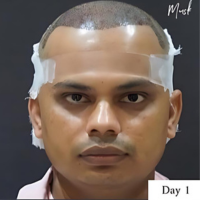



Hair Surgery Results and Long-Term Recovery
-
Hair Transplant After 4 Months
By the four-month mark, you should see a more noticeable improvement in hair growth. The new hairs that began to emerge around the three-month point will start to thicken and become more visible. The transplanted hair may still be relatively fine, but it will gradually gain strength and density.
-
Hair Transplant After 5 Months
At five months, the results of your hair transplant should be increasingly apparent. The new hair should be growing in length and density, although it might not yet have reached its final thickness or fullness. Hair growth can vary from person to person, but many start to see more substantial improvements around this time. The transplanted area should appear more natural, and you may notice that the hair is filling in well.
-
Hair Transplant After 6-12 Months
By 6 to 12 months, you will see significant improvements in the density and appearance of your hair. Most people will experience fuller coverage and a more natural-looking hairline as the transplanted hair fully grows in. The final hair surgery results of the transplant are typically becoming apparent, although complete maturation of the hair can continue up to 18 months.
-
Hair Transplant After 12-18 Months
By 12 to 18 months post-hair transplant, you should see the final results of your procedure. At this stage, the transplanted hair has usually grown to its full length and density, and any earlier thinning or unevenness should be resolved.




Successful Hair Transplant at Musk Clinic
Understanding the hair transplant timeline is important for achieving successful results and managing your expectations. At Musk Clinic, we offer hair transplant surgery with a proven track record of success. Our team is dedicated to guiding you through each hair transplant stage, ensuring a smooth journey from your initial consultation to final hair surgery results.
Get natural and full looking results at Musk Clinic that boosts your confidence.








